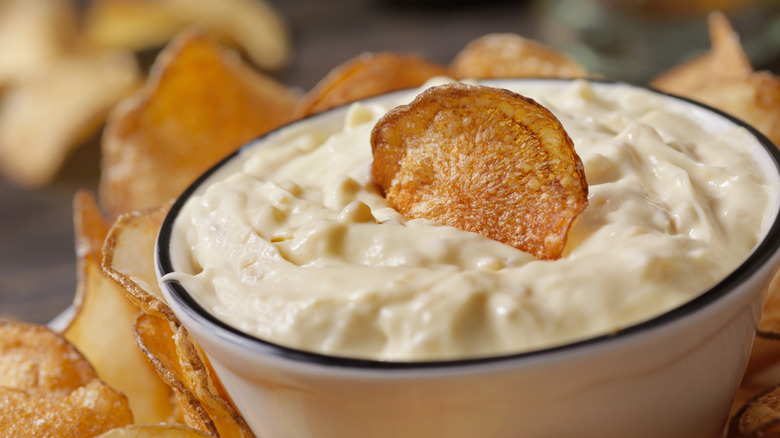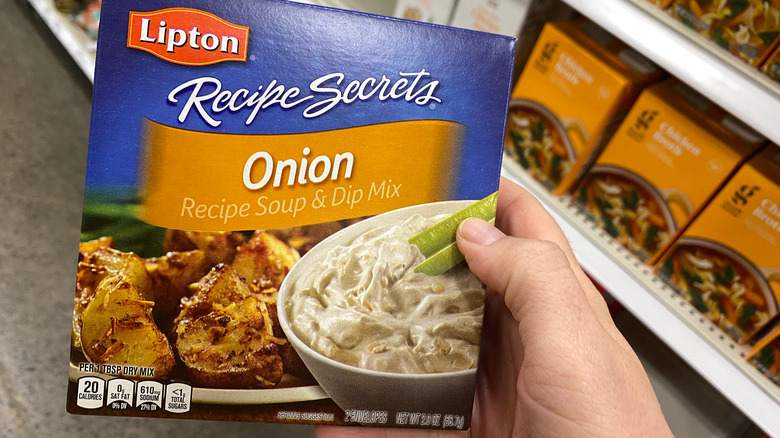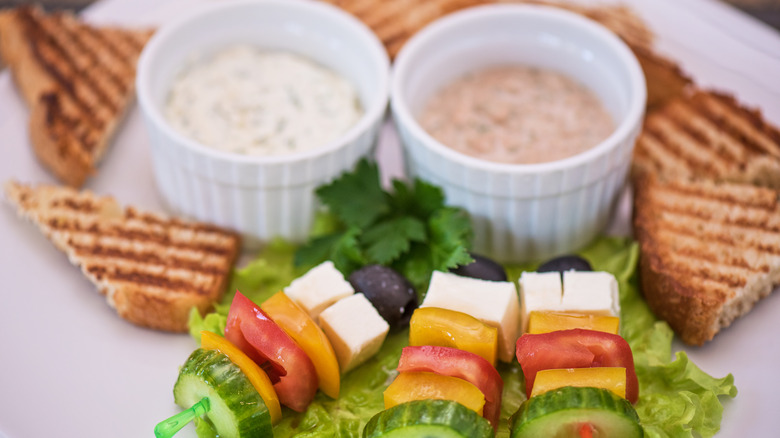No, French Onion Dip Isn't French
English muffins, Canadian bacon, Danish pastries — what do all of these foods have in common besides being extremely delicious? None of them were actually first invented in the countries their names would suggest. And although French onion soup is as French as a food can get, the similarly named French onion dip has no claim to the same culinary lineage.
It's easy to bury one's head in the sand when it comes to classic foods a culture has been eating for generations. For example, how many people do you know who could identify the true origins of other misleading staples like French fries or French toast? There's nothing inherently harmful about these naming conventions, however, being armed with a bit of food history (and an open mind) can deepen appreciation for culture and lead to new flavor discoveries. Here's a brief history on the French onion dip origin story, and how this classic is evolving today.
Where French onion dip started
Amazingly, French onion dip is as all-American as cheeseburgers and apple pie. It got its humble start in the 1950s in Los Angeles, California, when an unknown cook created a dip that combined sour cream with Lipton instant onion soup mix, which was initially known as "California Dip." Soon after that, Lipton caught on to its popularity and started putting it on instant French onion soup packages. As the recipe proliferated among the chip-and-dip-loving masses, though, the California moniker was dropped for a more marketable name with the cultural cachet of French cuisine — thus, French onion dip was born.
This wonderfully savory dip, as it is today, was enjoyed with potato chips, snack crackers, and crudités. And while it can be argued that the French onion soup instant powder from which its flavor is derived makes it a deserving owner of its name, the key thing to understand is that this dipping delight, unlike tzatziki or hummus, doesn't have a centuries-long history rooted in another culture's gastronomic traditions. It was born in America, mass-produced in America, and largely marketed to American consumers.
Taking French out of onion dip
Fans of this dip can try making their own homemade onion dips. These differ from French onion dip in that they substitute artificial French onion soup flavorings for real caramelized onions and use alternative bases like mayonnaise and cream cheese. Simple ingredients like these are an excellent canvas upon which dip connoisseurs can explore countless possibilities of new seasoning combinations and really customize and personalize the onion dip to suit their tastes.
Are you a fan of Indian flavors? Great! Try seasoning with curry powder. Are you vegan? Perfect! Try using tahini and vegan mayonnaise as your base. Onions are a near-universal ingredient and can be spotlighted effectively beyond the widely accepted sour cream and dehydrated onion soup format. It's safe to say that French onion dip is here to stay, but there's plenty of room for the next great onion dip variants to work their way into Super Bowl parties and picnic baskets around the country.


